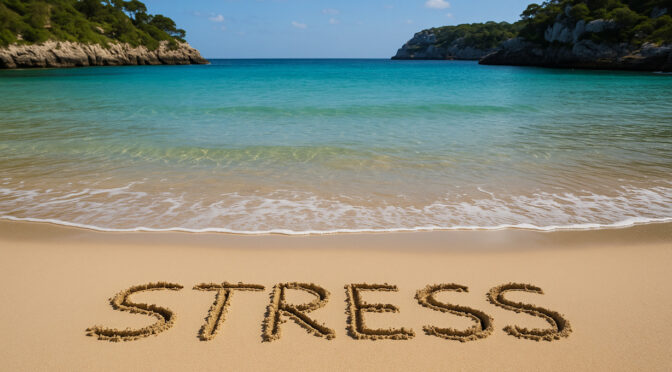Views: 1229
For a few weeks now, car horns have been heard again in the streets of the city. A sign that the holidaymakers have arrived. Curiously, they seem more impatient than the locals, who are probably working. This characteristic —the stress that some visitors bring with them— invites to some reflection.
The latest official statistics published in recent days show a reduction in the number of days tourists spend on the island. A feeling that had already been noticed here and on other islands. This has significant environmental and economic repercussions.
When people come to Menorca and shorten their stay, it usually implies a more accelerated pace when visiting the places no one wants to miss. If you have to see the island in four days instead of seven, you need to move around much more. Before you spent a whole morning at one beach, but now in a morning you have to visit two. This means more vehicles on the roads, more parking usage and… little connection with what we really still are.
We are compensating for shorter stays with a higher number of tourists. A catastrophic trade-off, which increases the ecological footprint per capita (due to the return flight that most of them take), while reducing the business volume for local companies.
The problems caused by the reduction in the length of tourist stays were already presented last year by the speaker from Formentera at the discussion sessions jointly organised by the Ateneu and the GOB. He explained that, in their experience of limiting tourist vehicles, they also use the entrance fee charged to visitors to encourage longer stays on the island.
The goal is precisely to get tourists to “calm down.” To give them more time to visit the most iconic places and thus reduce traffic and saturation. Menorca should also be working on implementing such mechanisms.
Perhaps we could consider modifying the tourist stay tax to incentivise longer stays. For example, by applying parameters that make shorter stays proportionally more expensive than longer ones.
Changing the current trend could bring local benefits (social, economic and environmental), but it would also benefit the visitors themselves. It’s clear that many of those who come are from environments where life conditions bring impatience to the surface. With more days on the island, the chances increase of a positive contagion —of adopting the Menorcan pace, to the rhythm of a havanera.
Clearly, this also requires reducing tourist promotion. In fact, it would be good to redirect part of this huge amount of public funding towards posters and materials informing visitors about the dimensions of the island and the zero time-saving achieved by making suicidal overtaking manoeuvres on the roads —those that endanger everyone’s life and yet let you arrive only twenty seconds earlier to your destination.
Perhaps there’s no need to invest much in bringing influencers who are obsessed with taking pictures in as many places as possible. That’s also stressed tourism —just disguised as trendy. If Menorca promotes itself as a calm destination, it’s good for reality to resemble that image, at least a little.
(This text is an adaptation of the original article published by Miquel Camps, as coordinator of territorial policy for the GOB, in the Menorca newspaper on 09/06/2025).

